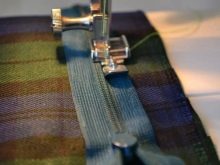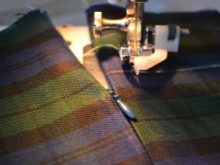All about hidden zippers
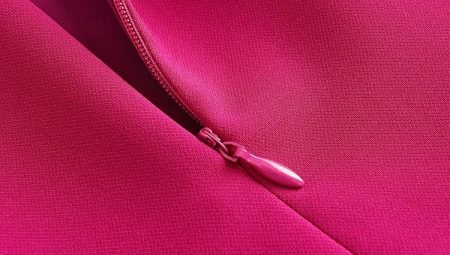
In the world of fashion, there are such sophisticated and delicate outfits that almost any fastener will look rude and inappropriate on them. However, such things are mainly sewn from fabrics without stretch, so tailors in any case need to create a fastener that allows them to comfortably put on such clothes. The solution to the problem is a hidden zipper - it allows you to unfasten the outfit so that you can dress comfortably, and after fastening it leaves only a barely noticeable tongue of the slider on the front side.
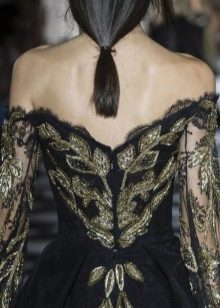
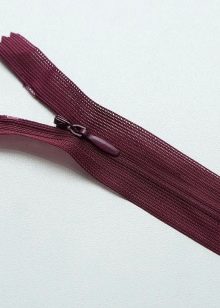

Peculiarities
A hidden zipper is a special type of quick one-piece fastener that is almost invisible from the front of the garment. The sewn lock looks like this because of the special structure: the teeth on it are located not on the front, but on the seamy side. The runner is also almost completely hidden behind the canvas - only the fastening tongue is visible from the face.
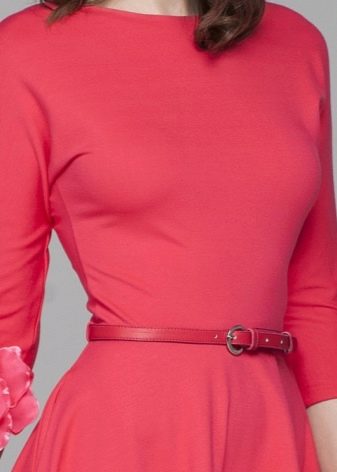
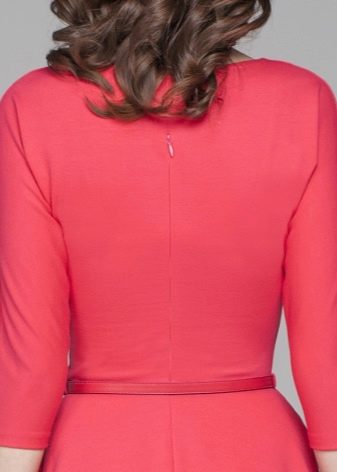
The special structure of the hidden zipper does not ensure that it will not be visible - the second important component of invisibility is the technology of attaching fittings into the product. If the fastener is sewn in the same way as ordinary zippers are sewn in, its canvas will still remain visible when it is fastened.
With the correct implementation of the stitching technology, the dress hidden zipper will look like a regular seam, at the end of which only the part of the slider is visible.
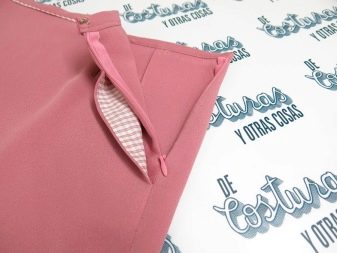
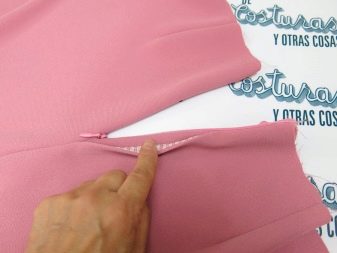
Views
A hidden zipper usually has three main characteristics: color, length and zipper number. The shade of the accessories must be selected as accurately as possible, even if it is a white fabric, because even it may have a slight shade, for example, milky. The length of the zipper is the length of the twisted spiral that holds the piece of hardware together, and not the full distance from end to end of the fabric, as in most cases novice seamstresses think. There are additional warp allowances at the ends of the fabric, which are necessary for comfortable processing of the fastener.

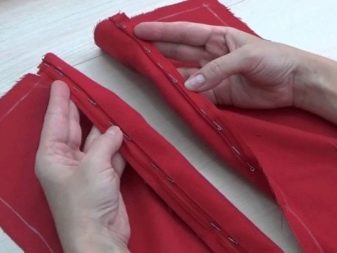
The slider number on the back of the slider is a marking that allows you to determine the width of the spiral. The numbering affects the size of the "dog": the larger the number, the larger it will be. Knowing the number allows, in the event of a breakdown, to replace the old slider with a new one without unnecessary difficulty. Also, this parameter affects what things you can sew this or that fastener into. The larger the slider and the width of the spiral, the stronger and rougher the zipper. For light dresses and blouses, use number 3 or 4 sewing fasteners. Reinforced number 5 slider fasteners are used for coarser clothing made from heavy fabric.
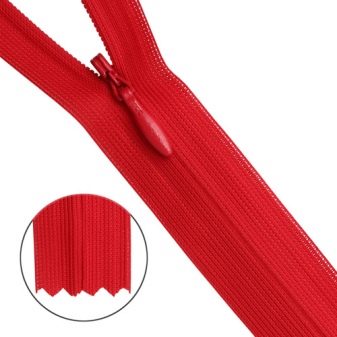
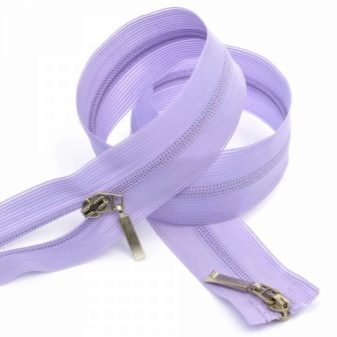
Each type of hidden lock is used for a different garment, so they come in a wide variety of sizes. Let us consider in more detail the standard dimensions of the varieties of hidden fasteners.
- Classic pay. Standard lock for summer clothes: light dresses, blouses, trousers and skirts. Most often, you can find several standard sizes of zippers on sale: 20, 30, 40 and 50 cm.Rarely there are intermediate length options, such as 15, 25 and 35 cm.Sometimes there are accessories, the length of which is 18 cm, but this is the size of the entire canvas , not just a plastic spiral. The maximum length of the dress fastener is 60 cm.
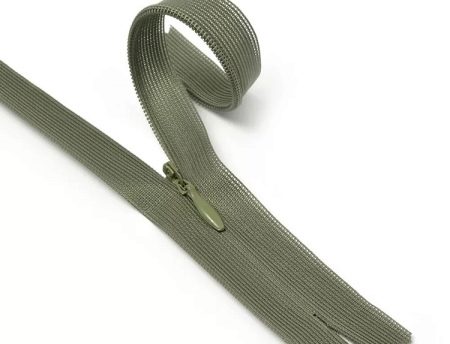
- Reinforced. Locks on a dense cotton cloth with a large spiral and slider number 5. The range of lengths of such accessories does not differ from the varieties of classic dress fasteners. Such zippers cannot be used for delicate fabrics, as they can easily damage delicate fabrics. They are used very rarely, because for denser clothes, in most cases, classic zippers with a regular slider are needed.
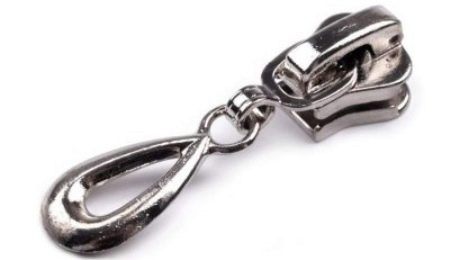
- Detachable. Hidden open-ended zippers are called fasteners in which the spiral is located on the seamy side, but with a regular slider that is visible from the front side. Such fittings are mainly inserted into outerwear. The standard length of such zippers is 60, 70, 90 and 100 cm. In rare cases, you can find accessories of 120 and 130 cm, but it must have 2 runners, otherwise the spiral will quickly break.
If the product needs a clasp of a non-standard size, for example, 12 cm, you can reduce the length of the spiral yourself. The one-piece lock is shortened through the bottom, and the split one - through the top.
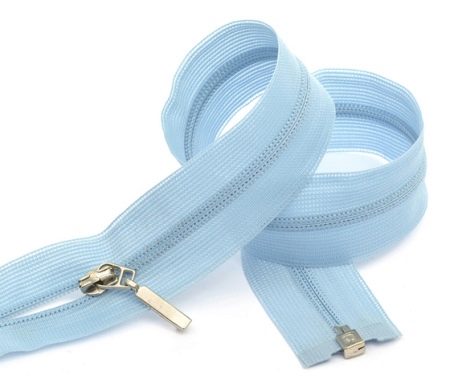
Selection Tips
The choice of a hidden zipper must be taken responsibly, because how comfortable it will be to wear clothes depends on its quality. The clasp is also an important element in determining how long a wardrobe item will last for its wearer. Consider a few nuances that you should pay attention to when choosing accessories.
- Slider work. Before buying, unfasten and fasten the fastener - the slider should move smoothly and almost silently along the teeth, without getting stuck anywhere. Be sure to check so that the new zipper does not part. Also try to slightly pull the ends of the belt to the sides - the slider should remain in place without undoing the spirals. This is necessary in order to check the locking mechanism of the slider, which prevents spontaneous opening.
- Slider tongue. Inspect the pull on and open tab for damage. The paint on it should be uniform, without scratches and chips. The tongue should look perfect as it is the only part of the hidden zipper that will be visible.
- Prongs. The plastic spiral that closes the fastener is located on the seamy side of the fabric. Examine it for bumps, sprains, or other damage that could interfere with the operation of the runner.The spiral should be uniform and smooth, because, most likely, it will touch the human body.
- Bindings. At the beginning and at the end of the zipper, there are plastic fasteners to prevent the slider from jumping off. The top ones are the most important: the shorter they are, the better, because they determine until what point the zipper will be fastened.
- Textile fabric. The basis must be chosen depending on the material to which the fastener will be sewn. For summer fabrics, choose fittings on a thin synthetic fabric. For rougher materials, it is better to purchase concealed cotton zippers with a reinforced slider.
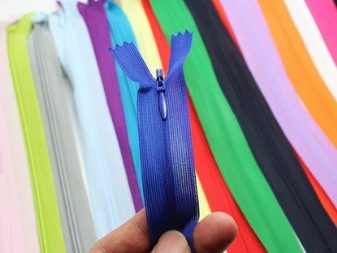
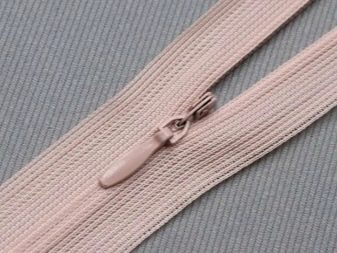
How to sew?
Concealed fittings are sewn using a special foot or two one-sided feet that allow to bend the teeth. The technology of processing a hidden zipper is not an easy task, so before sewing into a product, you need to practice on a separate fabric. Let's take a step-by-step look at how to sew on a hidden fastener.
- Attach the first side of the unbuttoned lock "face to face" to the product in the prepared incision, sweep or pin it with pins.
- Stitch until the presser foot rests on the slider, then remove the temporary connection.
- Fasten the zipper and pin the fabric of the product to the second side of it as it should look in finished form.
- Gently pin the pins from the front to the allowance, keeping the position of the fastener relative to the product.
- Unbutton the hidden lock as far as it will go and sew on the second side until the presser foot rests on the slider.
- Fasten the zipper and check the workmanship.
It is very important to place the stitches as close to the teeth as possible - the closer the stitching, the neater the treatment will look.

